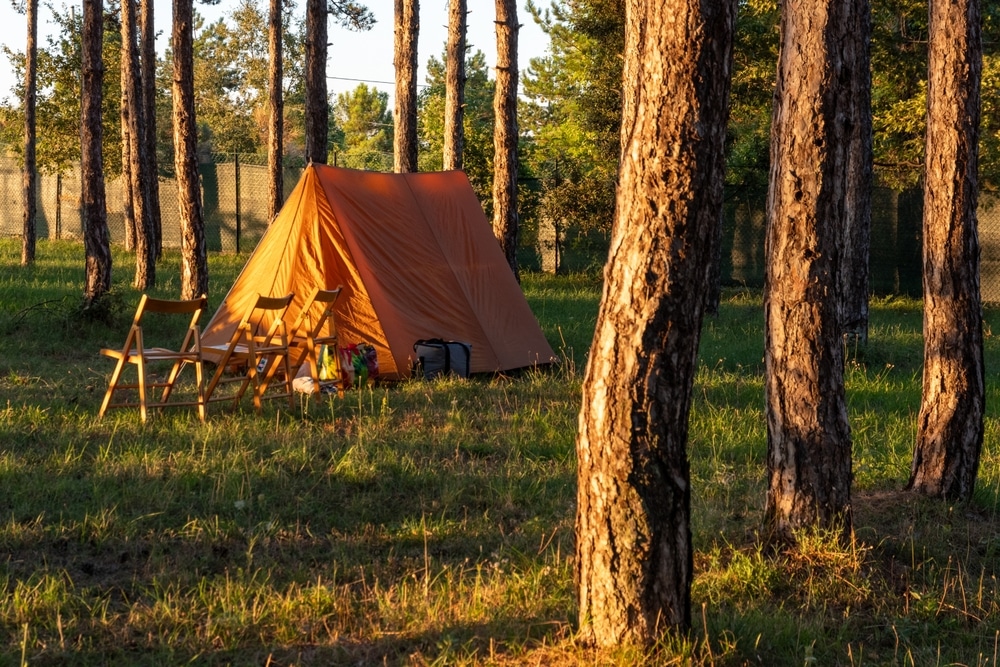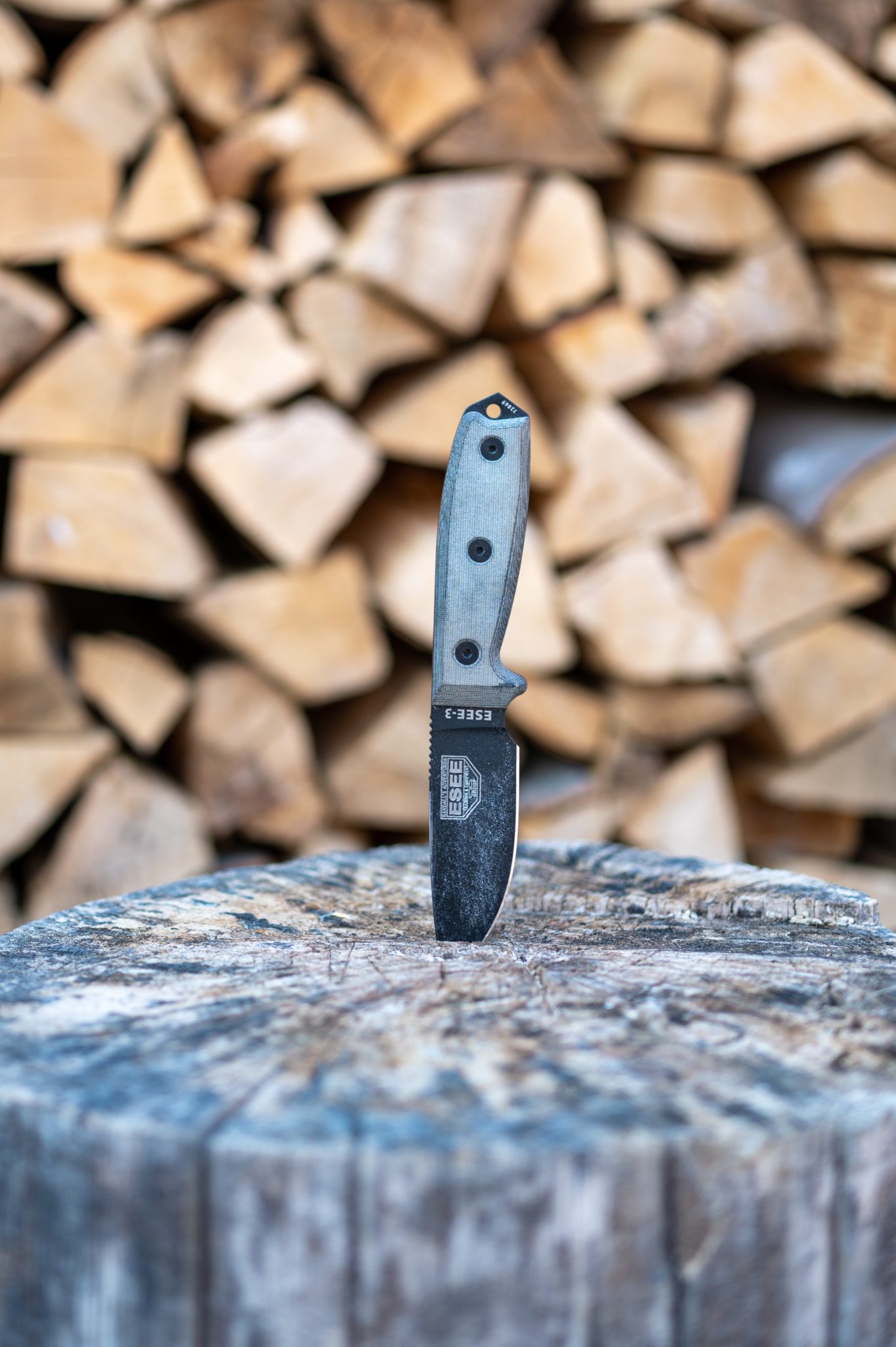Outdoor Blog
The Ultimate Boy Scout Camping Checklist

The Game with a Purpose, which develops character by practice, endeavors to have young mean lead their younger brothers in ‘learning by doing’ exciting things in the outdoors for the sheer joy there is in it. One of the first things Scouting begins to instill in the Tenderfoot scout is how to live up to the brief motto of the Boy Scouts of America: Be Prepared.
What better demonstration of preparedness than the gear that’s in your rucksack for long-term camping, the National Scout Jamboree, summer camp, or any other eventuality that may arise. Not only does preparedness help achieve the fourth aim of Scouting, mental and physical fitness, but it will also go a long way helping scouts in working to achieve the other four aims, namely character development, citizenship training, and leadership.
Outdoor enthusiasts have been working for a century or more on various approaches for discerning what the critical pieces of equipment are that are needed to survive in the backcountry. From common-sense tools like a sleeping bag to the various pieces that should be in a mess kit, learning all the different elements of a full rucksack takes time and practice.
Putting all the tools into use according to the Boy Scout Handbook and other guidelines like the Leave No Trace principles takes even more time and hard work on top of that. Fortunately, there are many scouts that have already been through this process and come up with some very clever methods for identifying what is essential to have in a backpacking backpack, day pack, and case for the Jamboree.

The gear in your rucksack is the largest indicator of your preparedness.
One of the best ways to remember the rules for packing is to experience that breathtaking moment when you arrive at the campsite just to realize you’ve left behind something critical like toothpaste and a toothbrush or a piece of gear essential for earning your next badge, like a swimsuit. Forgetting an element of the scout uniform is equally dire, but the enforcement is dependent on the older leaders of the pack.
The best thing to do is to start early and continue always to work on a personal packing list that you will be able to depend on to include everything you need for the type of camping trip you’re going on. Backpacking on a day trip doesn’t require all the same emergency items as long-term camping. The weather will also have an effect on what you bring.
Read on for the whole story on packing your gear for long-term camping or a shorter trip like an endeavor for the next badge. There’s plenty of good advice out there so we compiled all that we could find; it’s never too early to start working on your personal scout packing list.
What’s always essential for a camping checklist?
There are some variations among the many different lists of critical camping items. Camping equipment like the tent and various accouterments related to it like tent poles and a tarp, a sleeping bag and sleeping pad, toiletries, and cutlery for mealtime are all likely to be needed on any trip.
Even if you aren’t planning to stay out overnight, you should always be prepared with at least a tarp and some kind of sleeping bag just in case you are accidentally thrown off course or otherwise unable to return from the campout as soon as you had hoped to.
Clothing will always be a requirement, although whether you need long johns, long pants, or a sweater or sweatshirt can vary depending on the season and the planned activity. Without a doubt, scouts must have a complete scout uniform with them for long-term camping and jamborees. A poncho or raincoat is always wise to have and can be packed down very tightly generally speaking.
Pajamas, underwear, and good durable hiking boots or other footwear are all absolute requirements. A hat, gloves, and extra socks are likely to be useful and should be added to your camping checklist, especially if you plan to go out in the colder months or when rain is likely.
Outfitting a first aid kit
The first aid kit has to be packed with all the right elements. Medicine that hasn’t gone out of date, bandages that haven’t been wet, and plenty of insect repellent and ointments like sunscreen should be inside to be prepared for all non-emergency occasions. A flashlight, bulb and extra batteries should also be included.
A whistle to call attention in the event of a sudden accident and some safety pins to help affix bandages should be in the first aid kit in high enough numbers not to run out in case you need them.
Unlike certain types of clothing and sleeping gear, what is in the first aid kit should always be in the first aid kit. Replenishing supplies after camping trips is crucial to ensure that the next person who suffers a treatable bite, cut, or scrape isn’t forced to end their trip for lack of first aid supplies.
Anything you can think of that might be useful can always be added to the packing list. It’s better to add than it is to take away when it comes to first aid supplies, but remember that this stuff should be for non-emergencies only. There’s no way you’ll be able to take a whole ambulance with you, but work out what the things are that you wind up using every camping trip and you’ll know what you should be packing.

The mess kit is one of the most frequently incomplete parts of scout’s packs.
Packing up the mess kit
After a long day orienteering or working on a project at the campsite, scouts just about always work up a huge appetite. Despite this constant situation, the mess kit is the thing that is most frequently packed incompletely or that has pieces missing by the end of a long-term camping trip. Of course, the blame doesn’t rest singularly with scouts who are newer or beset with the multitudinous distractions of a camping trip.
The mess kit itself has developed since its inception and different brands often include different materials. Just as with all other types of gear, it’s important to get to know what’s in your mess kit and, more importantly, what should be in your mess kit.
The standard-issue military-style mess kit includes a plate, a pan, a cup, a pot, utensils, and a canteen for drinking water. Many of these implements have been replaced with more modern convenient models or integrated into other elements of the mess kit. The utensils, for instance, can be combined in a spork-like implement rather than having to keep track of three separate utensils.
Depending on your personal preference, you might like to get a complete set for your mess kit. The advantage of doing so is that the various pieces should fit together into a single unit that is more easily stowed in a rucksack. Some people cobble a mess kit together from different things that they find handy over a long period, which is also completely fine.
The important thing is to get those essentials covered. Something to eat out of, something to drink from, something to cook in, something to cook with, something to fry in, and something to eat with are all essential elements of the mess kit.
Rain gear for a packing list
One of the best things you can do when thinking about your camping gear is to focus on versatility. There’s no need to carry around lots of tools with only one or two applications. Just as you don’t need to pack a knife, fork, and spoon when a spork will do the trick, there are other multi-purpose things that no pack should be without.
The debate on the humble tarp is still raging, but from our perspective it’s an essential piece of gear for making a rain shelter, transporting firewood or other materials, or making shade from the sun. A tarp can even replace a tent if you set it up the right way, which can end up turning your rucksack into an ultralight collection of gear when you nix the tent poles and various heavy pieces of tent-related equipment. Similarly, an ultralight and packable rain jacket can replace heavier sweaters if it’s a sure thing that the weather will stay warm enough for the duration of the long-term trip.
Extras for a camping checklist
These extras are completely up to the individual scout and the specific aims of the endeavor. Binoculars can always be handy, but perhaps they can be left behind if you’re heading to a heavily-wooded area with no high vantage points from which you could possibly use the binoculars. Sunglasses are essential for some people who are more sensitive to sunlight, while others readily leave sunglasses behind or neglect to buy them in the first place.
Work gloves are another thing that some scouts never leave home without even though other scouts haven’t donned a pair in ages. Fishing gear is useful for a badge attempt but not in the forest. A swimsuit and a camera are both on the same level of being completely up to personal taste. In the end, you’re the one who has to carry the rucksack, to be careful with adding new gear, especially fragile gear like a camera.

A sleeping bag is certainly an essential piece of camping gear.
Dave Canterbury’s 10Cs
A longtime survivalist, Dave Canterbury is one of many to come up with a packing list to suit just about every situation that could arise at a campsite. He’s also taken the time over many years to perfect that list and corrected it when he found mistakes. It’s a very illuminating collection of essential camping gear, including the following:
- A cutting tool: This means a knife, of course. Thinking about the knife you need is really critical because it’s one of those pieces of gear that’s going to serve tons of different purposes. The length and thickness of the blade and handle are important for torque. It shouldn’t be so large that it can’t be used for detail-oriented jobs, while a blade that’s too small for jobs like firewood and food prep is equally disadvantageous.
- Combustion device: A firestarter can save a lot of anguish if weather conditions are bad. Rain, wind, and snow can turn the simple task of fire-starting into an hours-long ordeal. Having a firestarter with you is a very wise thing indeed, and if you can find one that sparks really easily with that cutting tool we just talked about then you’ll really be on the way to an efficient packing list.
- Cover: As already discussed, cover like clothing can change depending on conditions and the season. Never underestimate the need for a sweater or especially dry clothing. Sweat and creek water can be a trek-ruiner if you’re out in the elements with no way to get dry. Cover also means a tarp and a dependable towel and washcloth. If you want to keep that mess kit clean, remember you’ll need a washcloth that’s clean to clean it.
- Container: This means a water bottle, but so much more than a normal one (and especially a disposable one, remember the LNT guidelines). This container should be able to be used to cook water or drink it, but also seal tightly and be wide enough to clean easily.
- Cordage: As useful as a tarp can be, what you have to secure it with is just as critical. Cordage should be as durable as possible and there should be enough of it to secure lights, structures, and shelter in high winds and heavy precipitation. Consider fireproof and waterproof cordage and always bring a bit more than you think you should.
- Extra material: This one fits in with the first aid kit advice we went over earlier. Extra cloth, whether it’s a bandana, washcloth, or extra bandages, should be able to be used in first aid applications as well as for fire-starting and sun protection. Don’t bring anything you want to keep in good condition for this one. Some folks try to use toilet paper for this one, but it doesn’t really work out. T.P. is better as a firestarter and, of course, for its intended purpose.
- Adhesives: Duct tape, scotch tape, gorilla tape… there’s a lot than can work to fulfill this 7th essential. Great for starting a fire as much as for securing that extra material from point 6, the adhesive you pack is going to make the other items you have much more useful in more situations.
- Compass: Bring one that doesn’t run on batteries. Don’t depend on your phone and it’s network. Learn how to take a bearing and orient yourself with landmarks. An updated map of your area is also crucial for use with the compass. A magnifying glass and a mirror are helpful additions on many compasses if you can find one with them added on.
- Sail needle: A sail needle is a really large needle that you can use to sew tents and tarps up or for more than a few first aid applications. Find somewhere you can stow this needle for when you need it where it won’t jab you in the middle of a trek.
- Light: Even though the assumption is that there will be a campfire in the future sometime, having a strong headlamp is critical to finding your way in the dark, signaling to others, and keeping animals at bay. Never leave home without one of these and some extra batteries. It’s pretty much always going to get dark outside no matter what season it is.
- Always pack food with you: That hunger is going to hit hard, especially if there are any surprising developments. Granola bars and stopgap stomach-fillers like that will help keep up energy but also try to get high-calorie food that will keep well and restore critical nutrients to keep you alive and kicking during a long-term camping trip.

A detailed packing list can save time and stress before a long-term camping trip.
The packing list
Here’s a short summary of the different types of gear you’re going to want to have with you on the next camping trip. Bear in mind that this is not, and probably never will be, exhaustive. It’s up to each scout to make sure that the camping list is constantly updated and, most of all, that all our fellow scouts have what they need to survive in the great outdoors. Here are the basics:
- Day bag with food, snacks, a piece of rain gear, etc.
- Camping supplies for fire-starting, illumination, a hatchet, a saw, a multipurpose tool, etc.
- Clothing, towel, washcloth, winter clothes, sweaters, rain gear
- First aid kit
- Cooking equipment/mess kit
- Sleep gear, campsite gear
- Miscellaneous extra items
If you’re going as a pack and staying out in the wilderness for a while, bring food storage implements like a cooler with ice as well. You can’t survive forever on dehydrated food.
Final Verdict:
There are some pieces of gear that will always be useful no matter how long the camping trip or day trip. A pocket knife is always going to have some use, as is a compass, firestarter, and the rest of the 10Cs. You always need food and some way to eat it. A washcloth to clean things off and a method to carry water, be it a water bottle or something else, are both must-haves.
Cub scouts begin to learn about what they need and how to use it as a matter of course in BSA. Don’t get overwhelmed when you see a large sample packing list with hundreds of items on it. People who have made it to be eagle scouts and have had many more experiences and camping trips have developed these packing lists after years and years of work and care. The whole purpose is to put them to good use!
You never know when things are going to get wet from weather or river water, so make sure you have everything stored in a plastic bag that you can’t afford to let get wet. This is especially critical for the items in the first aid kit. Every time you go on a campout it’s a new learning experience. Use this guide to make sure you have what you need. Remember: Be Prepared!
Bonus tip: Watch this overview of the Ten Scout Essentials, Ten Cub Essentials, and the Pathfinder School 10Cs for a day hike!
Outdoor Blog
Gear You Should Snag for the Great Outdoors This Season

Outdoor enthusiasts know that having the right gear can make all the difference. Whether you’re hiking, camping, hunting, or engaging in any other outdoor activity, quality equipment ensures not only safety but also a better overall experience. As we head into a new season, it’s time to refresh your gear collection with essential items that will enhance your adventures. In this article, we’ll explore five pieces of must-have outdoor gear, focusing on both practicality and comfort.
Shooting Glasses Are Essential for Outdoor Adventures
If you’re heading out for a shooting range session or a hunting trip, investing in a quality pair of shooting glasses is non-negotiable. Eye protection is critical when engaging in any activity involving firearms, and shooting glasses are designed to keep your eyes safe from potential hazards like debris, shell casings, and even harmful UV rays.
Shooting glasses are a key safety measure that helps shield your eyes from impact and glare. The lenses are typically made from high-impact resistant materials that can endure tough conditions, making them a must-have for hunters, target shooters, and outdoor enthusiasts alike. Beyond safety, these glasses often come with polarized lenses to improve visibility in various lighting conditions. By incorporating shooting glasses into your outdoor gear, you’re ensuring not only better safety but also improved performance during your time in the wilderness.
What Should You Look For During Black Friday Hunting Gear Deals?
One of the best times to stock up on essential outdoor gear is during Black Friday. Black Friday hunting gear deals provide an opportunity for hunters to snag high-quality items at significantly reduced prices. Whether you’re after apparel, backpacks, or specialized equipment, Black Friday sales often feature steep discounts on top brands that every outdoor enthusiast should take advantage of.
This sale season is ideal for upgrading your hunting wardrobe and stocking up on essential gear that may normally be out of your price range. From weather-resistant jackets to durable boots and base layers, hunting gear can be pricey, and Black Friday is the perfect time to invest in the best equipment. By keeping an eye out for deals during this shopping period, you can save money while ensuring you’re well-prepared for your next big adventure.
Multi-Tools Are a Must-Have
Want to know the most versatile pieces of gear you can carry? It is a multi-tool. Whether you’re camping, hiking, or hunting, having a tool that can serve multiple functions is a game-changer. Multi-tools come equipped with a variety of features such as knives, screwdrivers, pliers, and scissors, all compactly housed in a single device that easily fits in your pocket or pack.
The practicality of a multi-tool is hard to beat. It allows you to tackle unexpected tasks, from cutting rope to repairing gear, all without needing to carry a full toolbox. When you’re out in the wild, you want to be prepared for anything, and a multi-tool ensures you’re ready to handle small emergencies or make quick fixes with ease.
Insulated Water Bottles Can Improve Your Outdoor Experience
Staying hydrated is one of the most important aspects of any outdoor activity. Whether you’re embarking on a long hike or spending hours in a hunting blind, having an insulated water bottle can make a difference. Insulated bottles have features that help to keep your drinks at the desired temperature for a long time, which is especially useful during extreme weather conditions.
These bottles maintain the temperature of your beverage—whether cold or hot—so you can enjoy refreshing water in the summer or a warm drink during chilly morning hunts. Insulated water bottles are also typically made from durable materials, meaning they can withstand the rigors of outdoor use without breaking or leaking. Investing in a high-quality insulated bottle ensures that you stay hydrated and comfortable throughout your outdoor excursions.

Durable Backpacks Can Enhance Your Outdoor Experience
A good backpack is the cornerstone of any successful outdoor trip. When you’re out in nature, you need a reliable, durable pack to carry all of your gear comfortably. Look for backpacks that are built to withstand harsh conditions, provide ample storage, and have ergonomic designs that distribute weight evenly to prevent strain on your back and shoulders.
Modern outdoor backpacks come equipped with multiple compartments to help you stay organized, as well as specialized features like hydration bladder compatibility, rain covers, and reinforced straps. By investing in a durable, well-designed backpack, you’ll have the capacity to carry everything you need—whether it’s extra clothing, food, or hunting gear—while maintaining comfort during long treks.
Outdoor Blog
Are You Ready for Autumn Adventures? How to Prep for an Unforgettable Outdoor Fall Guys Trip

As autumn rolls in, the great outdoors beckons with its crisp air and colorful foliage. For those gearing up for an adventurous Fall Guys trip—think hiking, camping, and maybe some deer hunting—the preparation is half the fun and all the necessity. With a myriad of activities to choose from, how do you ensure your fall excursion is not only exhilarating but also safe and comfortable? Here’s a step-by-step guide to making the most of your outdoor escapades this fall.
Choosing Your Adventure
First things first: deciding what type of fall outdoor activity tickles your fancy. Are you looking to conquer trails with breathtaking autumn views, or are you gearing up for a weekend of tranquil camping beside a glistening lake? Perhaps, the thrill of tracking and observing wildlife is what you’re after.
Each activity demands a different approach and preparation method. Start by defining what your fall guys trip looks like. Is it a quiet escape into the wilderness, a challenging hike, or a dedicated hunting expedition? Once you’ve nailed down the type of trip, you can start tailoring your prep list to match the demands of the activities you’ve chosen.
Plan a Camping Trip
If camping is on your agenda, meticulous planning is essential to enjoy both the spontaneity and serenity of nature without a hitch. When you plan a camping trip, think beyond just a tent and a sleeping bag. Consider the overall length of your trip, the climate of your chosen destination, and the size of your group. Are you venturing into bear country? If so, bear-proof containers for your food and trash are a must.
What’s the weather forecast? Ensure your gear is appropriate for colder nights and unpredictable weather patterns. A well-planned camping experience means securing the right campsite, bringing sufficient food and water supplies, and ensuring you have the necessary permits. Also, be aware of the leave-no-trace principles to keep your environmental impact to a minimum. Planning with precision ensures you’re free to relax and revel in the beauty of the season without unnecessary interruptions.

Gear Up for Deer Hunting
For many outdoor enthusiasts, fall is synonymous with deer hunting season. If this is the core of your guys trip, gearing up appropriately cannot be overstressed. Your deer hunting gear is your ticket to not only success but also safety. Start with the basics: a reliable hunting rifle or bow, suitable ammunition, and a quality scope or binoculars for spotting your target.
Clothing is next on the list; opt for layers that can easily adjust to changing temperatures and are also camouflaged to blend in with the fall environment. Don’t skimp on a good pair of boots—comfort, warmth, and durability are key when you’re on the move. Also, essential gear like a hunting license, deer tags, a first-aid kit, and even a GPS or compass should be non-negotiable items in your pack. Remember, the right gear not only enhances your chances of a fruitful hunt but ensures you can do so safely and responsibly within the ecological balance.
Map Your Route
Mapping your route is crucial whether you’re hiking, camping, or hunting. This involves more than just selecting a trail or a campsite; it means understanding the terrain, noting water sources, identifying potential shelter spots, and being aware of exit points in case of emergencies. Topographic maps, GPS devices, and even mobile apps can be incredibly useful tools for this.
Spend time familiarizing yourself with the area through these resources, and always carry a physical map and compass—you never know when technology might let you down. It’s also a good idea to inform someone about where you plan to go and expected return time is a safety must. Properly mapping your route not only helps in avoiding getting lost but also maximizes your interaction with nature, letting you find those hidden spots that make a trip memorable.

Prepare Physically and Mentally
The physical demands of outdoor activities, especially in the unpredictable weather of fall, should not be underestimated. Start conditioning your body weeks in advance, particularly if your trip involves strenuous activities like long hikes or hunting. Cardiovascular exercises, strength training, and hikes with a loaded backpack can prepare your body for the exertion to come.
Equally important is mental preparation. Familiarize yourself with survival skills, such as how to start a fire, basic first aid, and how to stay calm in unexpected situations. A physically and mentally prepared adventurer is more likely to enjoy the trip and handle potential challenges effectively.
Pack Smart
The final step in preparing for your outdoor trip this fall is packing. Since fall weather can be highly variable, layering is key. Include a moisture-wicking base layer, an insulating middle layer, and a waterproof outer layer. Besides clothing, pack essential gear tailored to your activities—this could include a sleeping bag rated for colder temperatures, waterproof bags to keep gear dry, cooking equipment, food supplies, and safety items like a whistle, flashlight, and multi-tool. Be mindful of the weight and volume of your pack; every item should justify its place in your backpack by being essential or serving multiple purposes.
Outdoor Blog
BougeRV Showcases Sustainable Innovations at Outdoor Retailer Summer Market 2024
BougeRV is thrilled to participate in the Outdoor Retailer Summer Market 2024, scheduled from June 17-19 at the Salt Palace Convention Center in Salt Lake City, Utah. As North America’s premier outdoor industry trade show, the event is a convergence of top brands, retailers, and industry professionals showcasing the latest in outdoor gear and innovations. BougeRV’s participation is a perfect example of their commitment to sustainability and eco-friendly outdoor living solutions.

At the head of BougeRV’s exhibit is the Rocky Portable Fridge, a robust and versatile cooling solution designed to meet the demands of outdoor enthusiasts. This innovative fridge features dual-zone capability, allowing it to function simultaneously as a refrigerator and a freezer. Built with heavy-duty materials, the Rocky Portable Fridge is designed to withstand the rigors of outdoor use, including shockproof capabilities up to 40°. The fridge’s efficient energy consumption, coupled with a battery protection system, makes it perfect for off-grid adventures, aligning perfectly with the sustainable ethos of the Outdoor Retailer Summer Market.
The Rocky Portable Fridge also shows off an impressive temperature range from -4°F to 68°F, allowing for precise temperature control. Its smart storage solutions, including a removable divider and basket, ensure that items remain organized and easily accessible. The fridge can be powered by a 12V/24V DC car port, a 100-240V AC wall outlet, or an optional portable power station, providing unparalleled versatility. This adaptability is crucial for modern adventurers who require reliable and efficient cooling solutions on the go.

In addition to the Rocky Portable Fridge, BougeRV is showing several other cutting-edge products designed to enhance outdoor experiences. The CRPRO 30, a compact and high-performance fridge, is perfect for campers and RV enthusiasts. Its advanced cooling technology and robust build make it a reliable companion for any journey. Similarly, the 4000BTU Portable Air Conditioner is tailored for overlanding and camping, offering powerful cooling with user-friendly features such as dual adjustable air outlets and an IPX4 water-resistant design. These products are expected to attract overlanding enthusiasts eager to explore the latest innovations in outdoor living.
BougeRV’s participation in the Outdoor Retailer Summer Market is really and truly about connecting with other industry leaders, exploring emerging trends, and demonstrating their commitment to sustainable and eco-friendly practices. By attending this prestigious and engaging event, BougeRV aims to highlight their dedication to providing high-quality products that cater to the needs of modern outdoor enthusiasts.
For more details about BougeRV and their innovative products, visit the BougeRV website. BougeRV’s involvement in the Outdoor Retailer Summer Market 2024 highlights their dedication to sustainability, innovation, and customer satisfaction, positioning them as a leading brand in the outdoor industry ready to make a significant impact at this breakout event.
-

 Outdoor Blog6 years ago
Outdoor Blog6 years agoCamping Cots and Air Mattresses: What’s Best for You?
-

 Guns & Shooting Gear Reviews3 years ago
Guns & Shooting Gear Reviews3 years agoBest Gun Brands – Top 10 Gun Manufacturers in the World
-

 Best in Class Reviews3 years ago
Best in Class Reviews3 years agoThe 7 Best Camping Dinnerware Items
-

 Outdoor Blog5 years ago
Outdoor Blog5 years ago5 Useful Items To Have When You’re Out On Your Hunting Trip
-

 Best in Class Reviews3 years ago
Best in Class Reviews3 years ago7 Great Sleeping Bags for Tall People – 2023 Review
-

 Best in Class Reviews5 years ago
Best in Class Reviews5 years agoThe 7 Best Fixed-Blade Survival Knives – Tested & Reviewed
-

 Backpacking Gear Reviews & Guides4 years ago
Backpacking Gear Reviews & Guides4 years ago7 Best Solar Panel Trail Cameras – Reviewed
-

 Best in Class Reviews3 years ago
Best in Class Reviews3 years ago10 Best Gazebos for Camping













